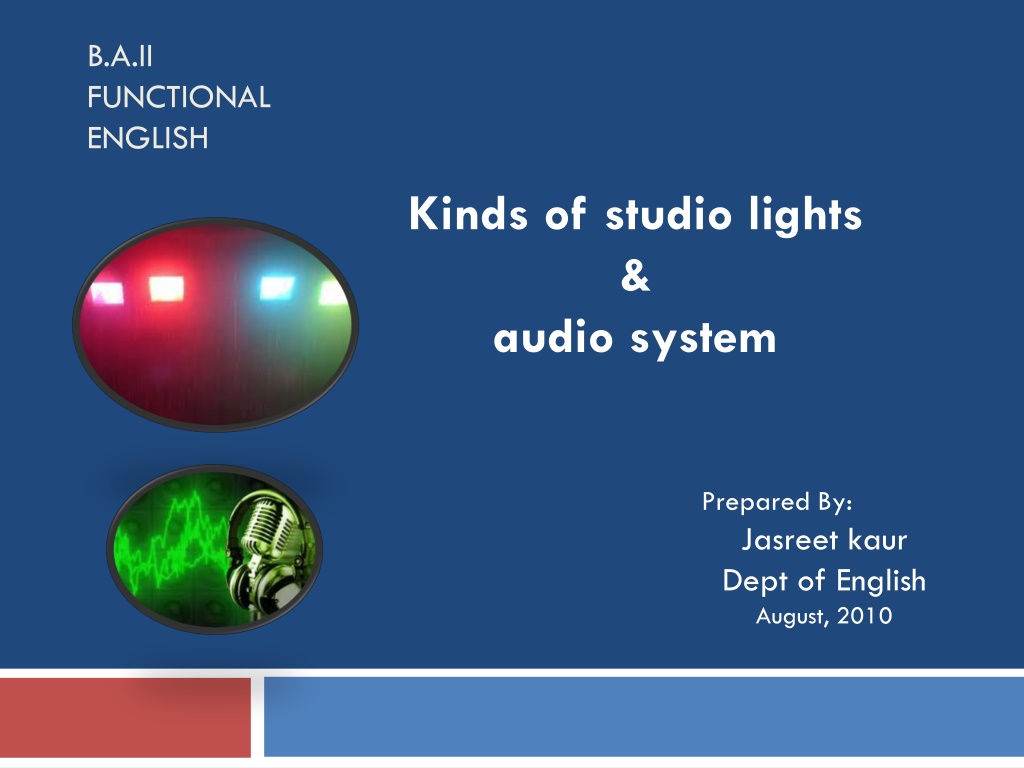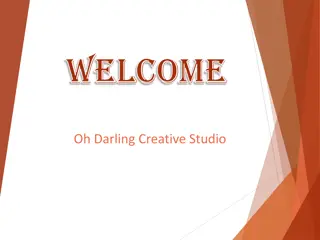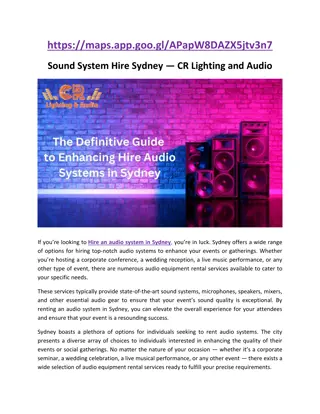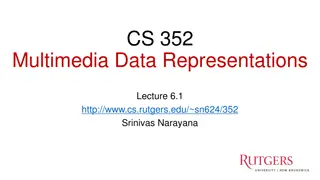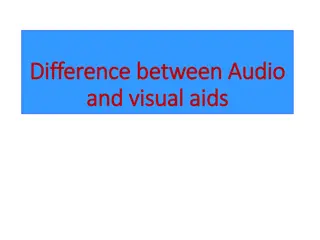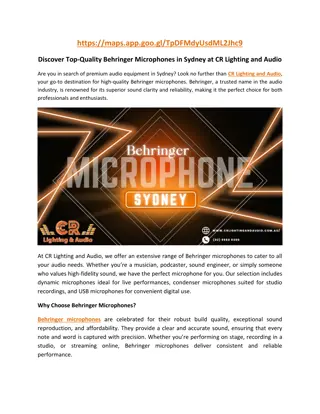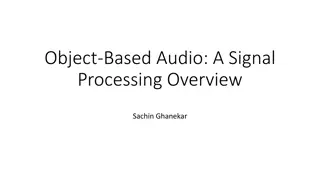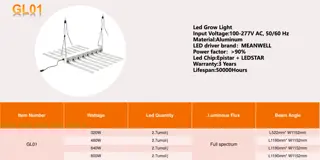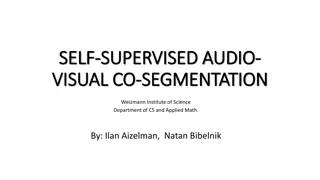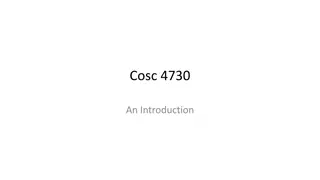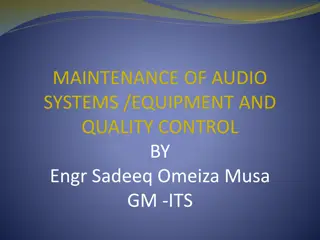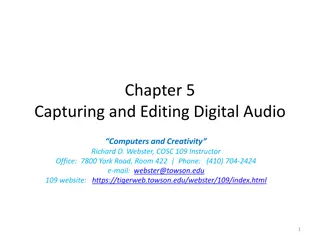Understanding Studio Lights and Audio Systems for Effective Productions
Explore the various types of studio lights such as quartz or tungsten-halogen lights, Fresnel spotlight, flood lights, base lights, and eye light. Learn about the functionality, purpose, and setup of studio lights for creating optimal lighting effects. Additionally, delve into the audio system components, including microphones, their classifications based on mounting techniques, pickup directions, and frequency ranges. Gain insights into the importance of these equipment in producing quality visuals and sound for different settings.
Download Presentation

Please find below an Image/Link to download the presentation.
The content on the website is provided AS IS for your information and personal use only. It may not be sold, licensed, or shared on other websites without obtaining consent from the author. Download presentation by click this link. If you encounter any issues during the download, it is possible that the publisher has removed the file from their server.
E N D
Presentation Transcript
B.A.II FUNCTIONAL ENGLISH Kinds of studio lights & audio system Prepared By: Jasreet kaur Dept of English August, 2010
Studio Lights Quartz or tungsten- halogen lights in orange yellow colour are used in most of the studios
Fresnel spotlight Cylindrical in shape 300 & 200 watts Four metallic flaps (barn doors) to adjust the quality and direction of the light Wide beam removes most of the shadows A studio has 60 of them
Flood lights / fill lights Spread diffused light Helps remove shadows created by spotlights 30 of them are used in a studio
Base lights & Back light Overall lighting of the stage Back light produces three dimensional effects
Eye light Focuses on the performer s face Floor lights are used to light up low areas
Studio lights Studio lights, controlled by the hoist control board, are suspended from hoists attached to the iron frame Lighting control room monitors the lighting of the studio Electronic dimmer panel controls maximum of 30 lights Communication between the LCR and the studio takes place through the talk back unit
Audio System What camera is to visuals, the microphone is to sound
Microphone Consists of diaphragm & Generating element which converts sound waves into electrical impulses
Classification of mikes On the basis of: Techniques by which they are mounted Directions from which they pick up sounds Range of frequencies
Floor stand mike / table stand mike Used in educational institutions
Stick mike / hand mike Used by the stage singers & Interviewers on vox populi shows
Pole mike / boom mike Boom mike can be lowered, extended and rotated
Clip- on mike / tie- tack mike Allows freedom of movement and keep the hands free
Electret mike Plays the invisible role
Camera mikes Insert mikes/ zoom mike / rifle mike
Classification on the basis of direction Directional mike/ Omni directional
Bi directional mike Dead at the sides Live in the front and rear drawing a figure of eight
Classification based on Frequency Dynamic microphone
Condenser microphone More sensitive than dynamic mics Have additional battery power source
